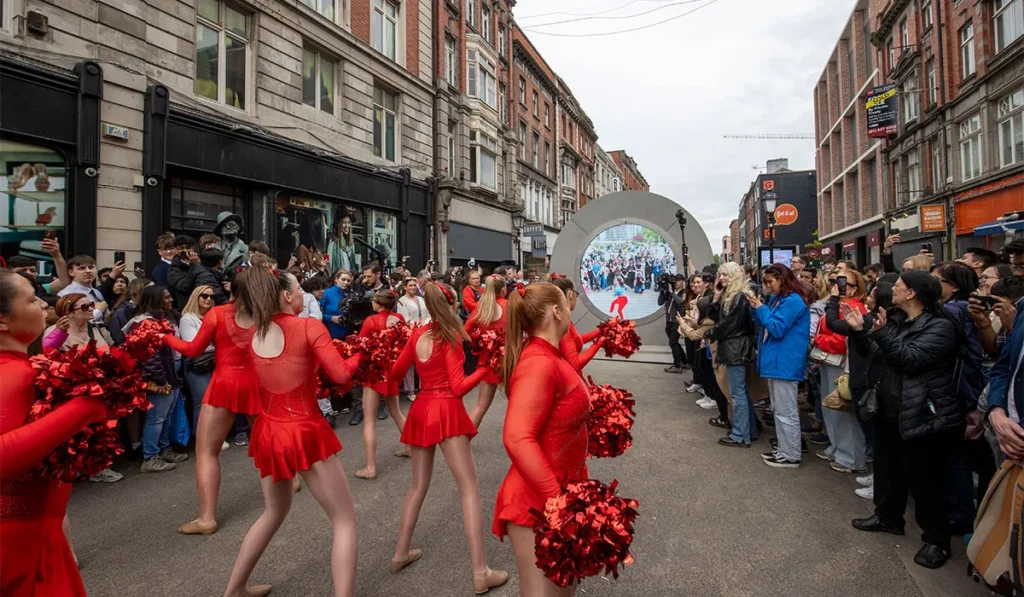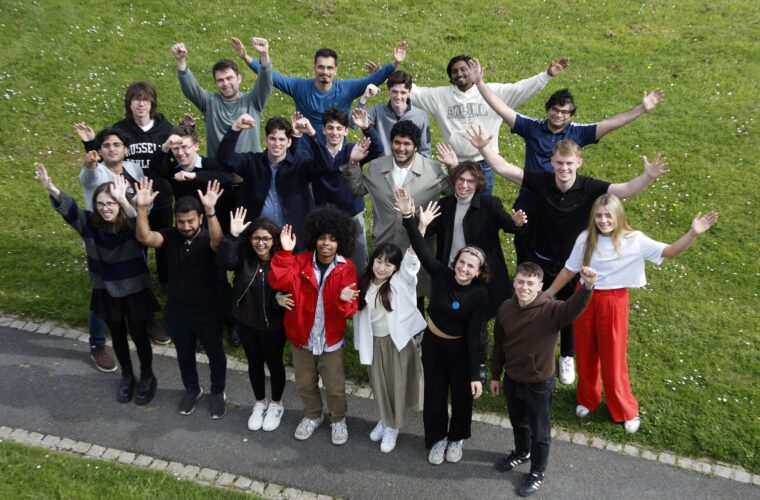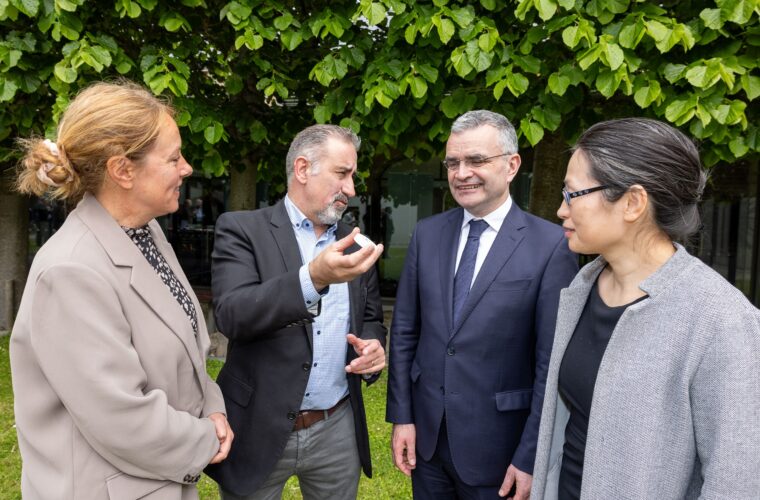The development of a portal between Dublin and New York almost broke the internet after a string of anti-social behaviour caused it to close down for a week. Designed by Lithuanian artist Benediktas Gylys and produced through a collaboration between Dublin City Council and a Manhattan business group, the portal embraces connectivity technology. In simple terms, connectivity encompasses digital networks and embodies a human dimension, enabling us to reach out to others no matter where they are located.
Described as a work of art that would enable Dublin and Ireland to host nonstop Zoom meetings with each other, the portal, which was first launched on May 8th, has drawn comparisons to something out of a sci-fi movie. In Ireland, it can be found off Dublin’s main thoroughfare, Talbot Street, while in New York, it’s situated at a plaza next to the Flatiron building.
Portal Dublin
So, how do the portals work exactly? According to the official portal’s website, they connect to each other through a livestream that regularly rotates between locations, providing a window between faraway places and connecting different cultures. Attracting tens of thousands of visitors and bridging both cities through technology has mainly led to positive developments. On the Dublin side, it has played host to marriage proposals, music performances, and dance and has even helped friends on both sides connect with each other despite the more than 5,000-kilometer distance and five-hour time difference.

The portal first emerged in Lublin, Poland and Vilnius, Lithuania and was born in response to travel restrictions as COVID first swept the world. Installed next to the Vilnius train station and Lublin’s central square, it has attracted thousands of tourists who enjoy making contact in real-time on both sides of the world.
New technology often attracts experimentation, and, unfortunately for Dublin, the portal had to be closed down temporarily due to anti-social behaviour and an OnlyFans model who used the screen to flash her privates to the other side. Regarding the incident, Lithuanian portal artist Benediktas Gylys said there should be some limits when introducing new technologies to cities. “Definitely it’s about us humans creating the artwork together, but we need to make sure that it’s also family friendly. I think everyone should think of a seven-year-old child in New York who wants to experience and whoconnect to Dublin and wave to people there. So that was my only request for the lovely people of Ireland.”
Portal New York
Responding to the portal now being restricted to certain use hours, James Mettham, president of the Flatiron Nomad Partnership, which operates the portal, responded by saying, “There’s been a point one per cent interaction that includes some hateful messages, some nudity, and that ruins it for everyone. We’re working closely with the portal team and the City Council in Ireland to figure out ways to make sure we can continue to show this. The vast majority are really enjoying the fact that they can peer into the city like this.”
Despite both portals championing newspaper headlines across the globe, their popularity for creating unprecedented visual bridges between cities continues to grow. Connectivity tech may be coming to Vilnius, Reykjavik, Iceland, and London, UK, with plans for portals in both cities. Nobody knows where they will connect, but one thing is for sure: the appetite for endless Zoom calls shows no signs of stopping anytime soon.



